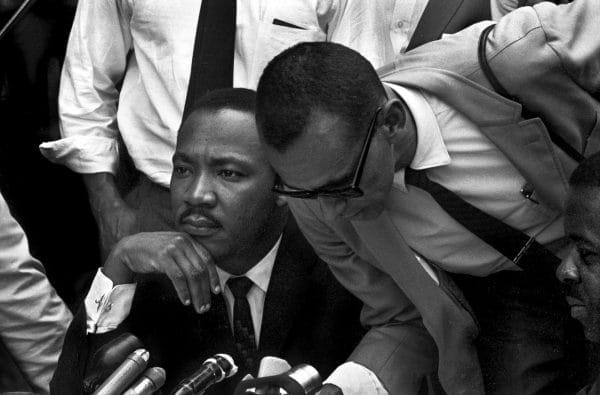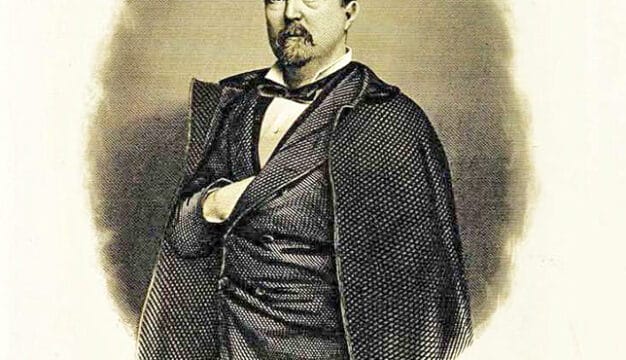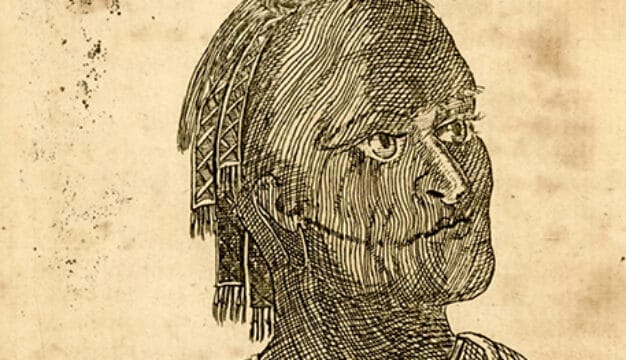"Letter from Birmingham Jail"
Martin Luther King‘s “Letter from Birmingham Jail” is the most important written document of the civil rights era. The letter served as a tangible, reproducible account of the long road to freedom in a movement that was largely centered around actions and spoken words. Despite its pragmatic and hurried origins, the document is now considered a classic work of protest literature.
 Martin Luther King and Wyatt Tee Walker
In April 1963, leaders from the Alabama Christian Movement for Human Rights and the Southern Christian Leadership Council, including Birmingham civil rights activist Fred Shuttlesworth and Martin Luther King Jr., commenced a series of sit-ins and pickets, known as the Birmingham Campaign, aimed at bringing an end to municipal segregation ordinances in Birmingham. On Good Friday, April 12, King violated a court injunction prohibiting public civil rights demonstrations in the city. Local police officers arrested King and a handful of protestors, including Reverend Ralph Abernathy, and transported them to the Birmingham city jail, where 40 years earlier, a prisoner had penned a mournful folk ballad about the place that included the line “write me a letter; send it by mail; send it in care of Birmingham jail.”
Martin Luther King and Wyatt Tee Walker
In April 1963, leaders from the Alabama Christian Movement for Human Rights and the Southern Christian Leadership Council, including Birmingham civil rights activist Fred Shuttlesworth and Martin Luther King Jr., commenced a series of sit-ins and pickets, known as the Birmingham Campaign, aimed at bringing an end to municipal segregation ordinances in Birmingham. On Good Friday, April 12, King violated a court injunction prohibiting public civil rights demonstrations in the city. Local police officers arrested King and a handful of protestors, including Reverend Ralph Abernathy, and transported them to the Birmingham city jail, where 40 years earlier, a prisoner had penned a mournful folk ballad about the place that included the line “write me a letter; send it by mail; send it in care of Birmingham jail.”
 Charles Carpenter
During King’s marches prior to his arrest, a diverse group of Alabama‘s leading white religious leaders had gathered to discuss the rising racial tensions and issued a public statement that questioned the timing and methods of the civil rights demonstrations. This group included Episcopal bishops Charles C. J. Carpenter and George Murray, Methodist bishops Nolan Harmon and Paul Hardin, Roman Catholic bishop Joseph Durick, Southern Baptist minister Earl Stallings, Presbyterian clergyman Edward Ramage, and Rabbi Milton Grafman. The ministers joined a chorus of critics who questioned why King and his fellow activists had chosen to stage their protests in Birmingham so soon after the city’s voters had rejected the leadership of its vocally segregationist Public Safety Commissioner Eugene “Bull” Connor. These critics favored the electoral process, rather than King’s use of direct action, as a means of pursuing social justice.
Charles Carpenter
During King’s marches prior to his arrest, a diverse group of Alabama‘s leading white religious leaders had gathered to discuss the rising racial tensions and issued a public statement that questioned the timing and methods of the civil rights demonstrations. This group included Episcopal bishops Charles C. J. Carpenter and George Murray, Methodist bishops Nolan Harmon and Paul Hardin, Roman Catholic bishop Joseph Durick, Southern Baptist minister Earl Stallings, Presbyterian clergyman Edward Ramage, and Rabbi Milton Grafman. The ministers joined a chorus of critics who questioned why King and his fellow activists had chosen to stage their protests in Birmingham so soon after the city’s voters had rejected the leadership of its vocally segregationist Public Safety Commissioner Eugene “Bull” Connor. These critics favored the electoral process, rather than King’s use of direct action, as a means of pursuing social justice.
 Edward Ramage
Early in his eight-day imprisonment, King read the white ministers’ statement and began composing a response. He gave bits and pieces of the letter to his lawyers to take back to movement headquarters, where the Reverend Wyatt Walker began compiling and editing the literary jigsaw puzzle. The men settled on a final version on April 16, 1963. The 21-page, typed, double-spaced essay appears as though it is personal correspondence, addressed to the eight white ministers. It opens with a salutation reading “My dear fellow clergymen” and concludes with “Yours for the cause of peace and brotherhood.” The final version of the letter explores two central themes: justification and admonishment. King justifies his presence in Birmingham, his uses of nonviolence and direct action, his timing, his willingness to break laws, and his apparent extremism. The civil rights leader also admonishes white moderates and white churches for not doing more to help the movement’s quest for equality.
Edward Ramage
Early in his eight-day imprisonment, King read the white ministers’ statement and began composing a response. He gave bits and pieces of the letter to his lawyers to take back to movement headquarters, where the Reverend Wyatt Walker began compiling and editing the literary jigsaw puzzle. The men settled on a final version on April 16, 1963. The 21-page, typed, double-spaced essay appears as though it is personal correspondence, addressed to the eight white ministers. It opens with a salutation reading “My dear fellow clergymen” and concludes with “Yours for the cause of peace and brotherhood.” The final version of the letter explores two central themes: justification and admonishment. King justifies his presence in Birmingham, his uses of nonviolence and direct action, his timing, his willingness to break laws, and his apparent extremism. The civil rights leader also admonishes white moderates and white churches for not doing more to help the movement’s quest for equality.
In reality, the document was never sent to the eight ministers and instead was used by the movement for public-relations purposes as a response to broader criticisms from around the country. The “Letter From Birmingham Jail” first appeared in the national press on May 19, 1963, and was soon printed and reprinted throughout the United States. In the aftermath of the Birmingham campaign, the “Letter” became part of American folklore. It now appears in hundreds of anthologies and is studied in secondary schools and colleges all over the world.
Additional Resources
Bass, S. Jonathan. Blessed Are the Peacemakers: Martin Luther King Jr., Eight White Religious Leaders, and the “Letter from Birmingham Jail.” Baton Rouge: Louisiana State University Press, 2001.
King, Martin Luther. Why We Can’t Wait. New York: Signet Classics, 2000.



